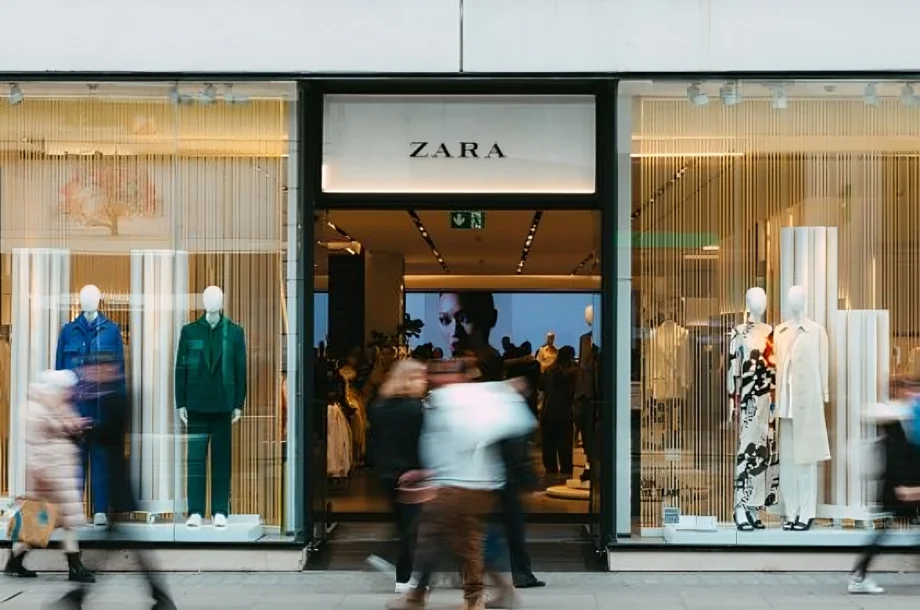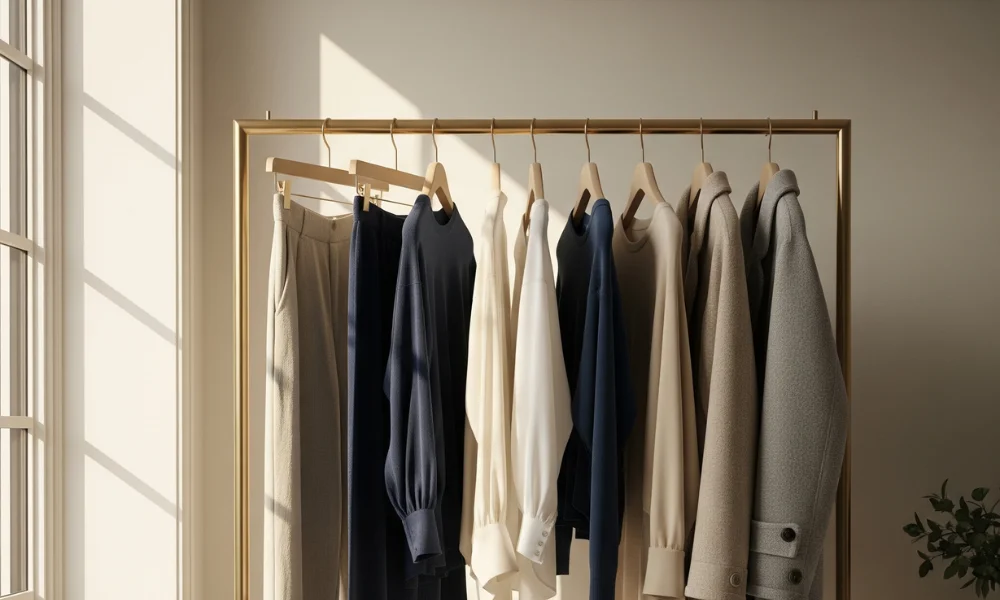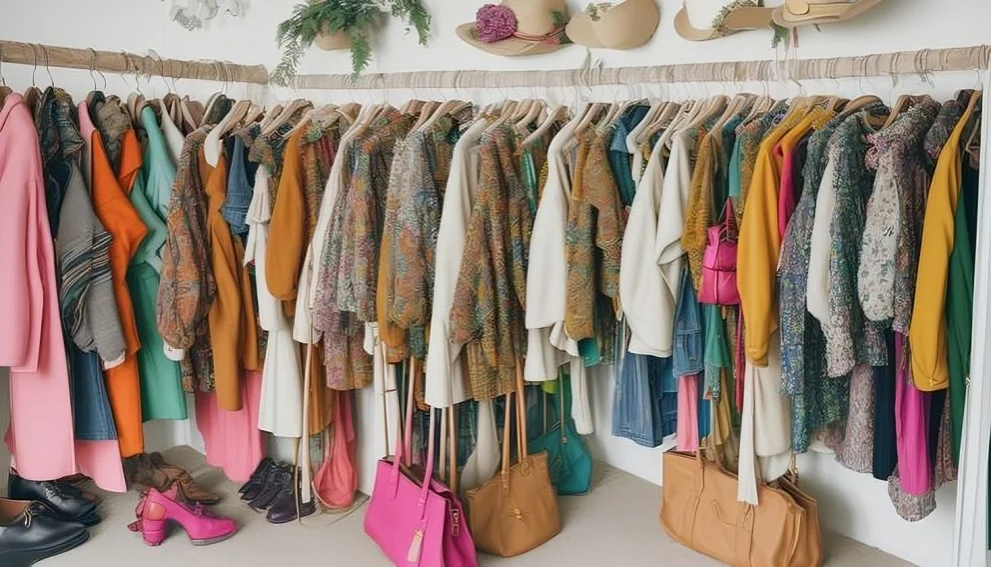Fashion has always been a way to show culture, identity, and lifestyle. Today, people around the world prefer certain labels more than others. These names have become the most worn fashion brands that dominate wardrobes worldwide.
The reason is simple they mix style, quality, and cultural influence. From luxury labels to affordable streetwear, these brands continue to shape how people dress every day.
In this article, we’ll look at the most worn fashion brands globally, their impact, and why they remain so popular.
Why Certain Fashion Brands Dominate

Fashion brands don’t rise to the top by chance. In fact, they dominate because they balance tradition with innovation.
First of all, they deliver consistent quality, which builds customer trust. Moreover, this reliability creates loyalty across different markets.
Secondly, celebrity power and social media make a huge difference. For example, from Instagram influencers to Hollywood stars, big names keep these labels in the spotlight. As a result, the brands gain global recognition much faster.
Finally, pricing also matters. However, luxury labels thrive among the elite, while affordable brands like Zara and H&M win over the masses with budget-friendly, trendy looks. Therefore, both luxury and fast fashion maintain strong positions. In addition, constant innovation ensures these brands stay relevant in changing times.
Most Worn Luxury Fashion Brands Globally
Nike – The Global Leader in Sportswear
Nike is more than just a sportswear brand; it represents a global lifestyle that resonates with millions of people. The brand’s iconic swoosh logo has become one of the most recognized symbols in the world, synonymous with performance, innovation, and inspiration.
From revolutionary sneakers like the Air Jordans to high-performance workout gear, Nike continues to be a favorite among professional athletes, fitness enthusiasts, and everyday consumers. Its ability to blend functionality with fashion makes it a go-to choice across different demographics and markets.
Nike also thrives on collaborations with celebrities, athletes, and designers, ensuring it remains relevant in both sports and pop culture. According to Statista, it continues to hold its position as the world’s leading apparel brand by revenue—a testament to its dominance and lasting influence in the global sportswear industry.
Adidas – Performance Meets Style
Adidas has built its reputation on a unique balance of performance-driven products and stylish designs. Instantly recognizable by its signature three stripes, the brand has successfully merged athletic performance with street fashion, appealing to a diverse audience worldwide.
From the highly sought-after Yeezy sneakers to a wide range of fitness apparel, Adidas continues to push boundaries in both innovation and cultural relevance. The brand’s collaborations with global icons like Beyoncé, Pharrell Williams, and Kanye West have amplified its presence beyond sports, positioning it as a trendsetter in lifestyle fashion.
With its emphasis on quality, comfort, and design, Adidas remains a global favorite, consistently bridging the gap between athletic performance and everyday wear.
Zara – Fast Fashion Trendsetter

Zara has established itself as a global leader in the fast fashion industry, consistently setting trends with its ability to translate runway-inspired looks into affordable, everyday wear.
The brand’s business model focuses on speed, ensuring that new collections are designed, produced, and distributed to stores in record time. This quick turnaround allows Zara to meet consumer demand for the latest styles almost instantly, keeping shoppers engaged and eager for fresh arrivals.
Because of this efficiency and its widespread availability, Zara has become one of the most worn fashion brands across multiple continents. Its presence in major fashion capitals and local markets alike makes it a go-to choice for style-conscious consumers worldwide.
By offering a balance of accessibility, affordability, and trend-focused designs, Zara continues to dominate the global fashion scene and influence how people dress daily.
H&M – Affordable and Stylish
H&M is one of the most accessible fashion brands in the world, known for offering stylish clothing at budget-friendly prices. The brand appeals to a wide audience by providing a balance between trend-driven designs and affordability, making it a go-to choice for everyday wear.
Beyond affordability, H&M has also positioned itself as a forward-thinking brand by embracing sustainability. Through initiatives such as using recycled fabrics, promoting conscious collections, and encouraging clothing recycling programs, the company attracts eco-conscious shoppers who value both fashion and environmental responsibility. This combination of style, accessibility, and sustainability has made H&M particularly popular among younger generations.
Gucci – The Luxury Powerhouse
Gucci stands as one of the most influential luxury fashion houses, representing boldness, creativity, and exclusivity. Its iconic GG monogram, unique patterns, and distinctive designs have become global symbols of luxury. By constantly reinventing itself through innovative collections and striking campaigns, Gucci maintains its status as a leader in high-end fashion.
Celebrity collaborations and strong visibility in music, film, and pop culture have further amplified Gucci’s influence. While its price point positions it in the luxury segment, the brand’s cultural impact extends far beyond the fashion world. For many, Gucci represents not only high-quality craftsmanship but also a lifestyle statement that blends tradition with modern artistic expression.
Streetwear and Youth Culture Influence
Streetwear has reshaped modern fashion, especially for younger generations.
Supreme – The Cult Brand
Supreme started as a small skateboarding label in New York City but quickly evolved into a global streetwear powerhouse. What sets Supreme apart is its ability to blend skate culture, art, and fashion into one distinctive identity.
The brand is best known for its highly coveted limited-edition drops, where products often sell out within minutes of release. This scarcity-driven model has turned Supreme items into collector’s pieces, frequently resold at several times their original value.
Beyond apparel, Supreme has collaborated with industry giants like Nike, Louis Vuitton, and The North Face, cementing its place not just in streetwear but in the wider fashion landscape. Today, Supreme is more than a clothing brand it’s a cultural icon and a status symbol.
Uniqlo – Minimalist Everyday Wear
.webp)
Uniqlo has redefined the idea of everyday fashion by focusing on simplicity, affordability, and quality. Instead of chasing fleeting trends, the Japanese retailer emphasizes timeless basics that are both functional and stylish.
Its signature LifeWear concept highlights clothes that adapt seamlessly to daily life, offering comfort and durability without compromising on design. Uniqlo is also well-known for its collaborations with world-class designers and artists such as J.W.
Anderson, Christophe Lemaire, and even pop culture icons. These partnerships bring a creative twist to its minimalist collections, attracting a wide audience worldwide. With its strong emphasis on innovation, like Heattech fabrics and AIRism technology, Uniqlo continues to stand out as a brand that marries practicality with style.
Levi’s – The Denim King
Few brands are as synonymous with denim as Levi’s. Established in the 19th century, Levi’s revolutionized fashion by creating durable jeans that were initially made for workers and miners.
Over the decades, those same jeans transformed into a timeless fashion staple, embraced by rebels, rock stars, and everyday wearers alike. Today, Levi’s remains the gold standard in denim, offering a wide range of fits, washes, and cuts that cater to different generations and lifestyles. Its 501 jeans are considered iconic and continue to set the benchmark for denim worldwide.
Beyond its heritage, Levi’s is also taking significant steps in sustainability by introducing water-saving production techniques and recycled materials. With its global presence and enduring appeal, Levi’s has secured its place as the king of denim for over a century.
Why These Brands Stay Popular
The enduring success of the most worn fashion brands is not accidental—it stems from a combination of strategy, adaptability, and cultural awareness. A few core factors drive their continued relevance:
1. Innovation:
Leading fashion brands consistently invest in research, design, and technology to refresh their collections. Whether through sustainable fabrics, limited-edition collaborations, or tech-infused apparel, innovation keeps customers engaged and excited about what’s next.
2. Accessibility:
Global accessibility plays a huge role in popularity. These brands have built strong retail networks, both physical and digital, ensuring that their products are available to customers across continents. Seamless e-commerce platforms, efficient logistics, and inclusive pricing strategies further expand their reach.
3. Celebrity Endorsements and Influencer Collaborations:
Endorsements from celebrities, athletes, and influencers amplify visibility and create aspirational value. When trendsetters wear these brands, consumers are more likely to follow, fueling demand and reinforcing the label’s relevance in pop culture.
4. Cultural Fit and Localization:
Instead of offering a one-size-fits-all approach, popular brands carefully adapt their marketing campaigns, product lines, and even sizing to suit regional preferences. This cultural sensitivity helps them build loyalty in diverse markets while staying in tune with global fashion movements.
Ultimately, the most worn fashion brands maintain popularity because they balance tradition and trend, offering timeless identity while remaining flexible enough to evolve with consumer expectations. This ability to innovate while staying relatable is what keeps them at the forefront of the fashion industry.
The Future of Most Worn Fashion Brands

Fashion is evolving quickly. Firstly, two main forces are driving this change:
In terms of sustainability, brands like H&M and Uniqlo are actively working on eco-friendly fabrics and recycling initiatives. Moreover, these efforts appeal to younger, environmentally conscious consumers.
Secondly, technology is reshaping fashion. For instance, digital fashion, AI-driven recommendations, and even metaverse clothing are creating new ways for people to engage with brands. Additionally, these innovations allow for personalized experiences, which can increase brand loyalty.
Consequently, both sustainability and technology are influencing consumer choices. Therefore, these elements will largely determine which brands remain the most worn in the years to come.
Ultimately, fashion brands that adapt successfully will continue to thrive while others may fall behind. As a result, staying innovative and eco-conscious is key for long-term success.
FAQs on Most Worn Fashion Brands Globally
Q1: Which fashion brand is worn the most worldwide?
Nike is the most worn brand globally because of its wide reach, stylish designs, and strong cultural presence.
Q2: Are luxury brands more popular than fast fashion brands?
Not always. Luxury brands like Gucci dominate high-end markets, but Zara and H&M are worn by more people due to affordability.
Q3: What role does social media play in fashion brand popularity?
Social media increases visibility through influencers, celebrities, and viral campaigns, making brands more attractive.
Q4: Which fashion brand is leading in sustainability?
H&M and Uniqlo are among the leaders, focusing on recycled fabrics and eco-friendly production.
Q5: What’s the difference between “most worn” and “most valuable” brands?
“Most worn” shows what people buy and wear daily, while “most valuable” reflects revenue and brand worth.
Conclusion
The most worn fashion brands globally clearly show a perfect mix of style, affordability, and influence. For example, Nike leads in sportswear, while Gucci rules luxury, Zara and H&M dominate fast fashion, and Levi’s continues its denim legacy.
Meanwhile, Supreme keeps streetwear exclusive, whereas Uniqlo focuses on simplicity. Together, these brands shape the way the world dresses every single day. Moreover, their influence extends beyond clothing because they set trends, thus inspiring fashion choices worldwide.
Additionally, as fashion changes with sustainability and technology, these names are set to remain global favorites for years to come. In conclusion, they balance tradition with innovation, ensuring their relevance throughout generations.

